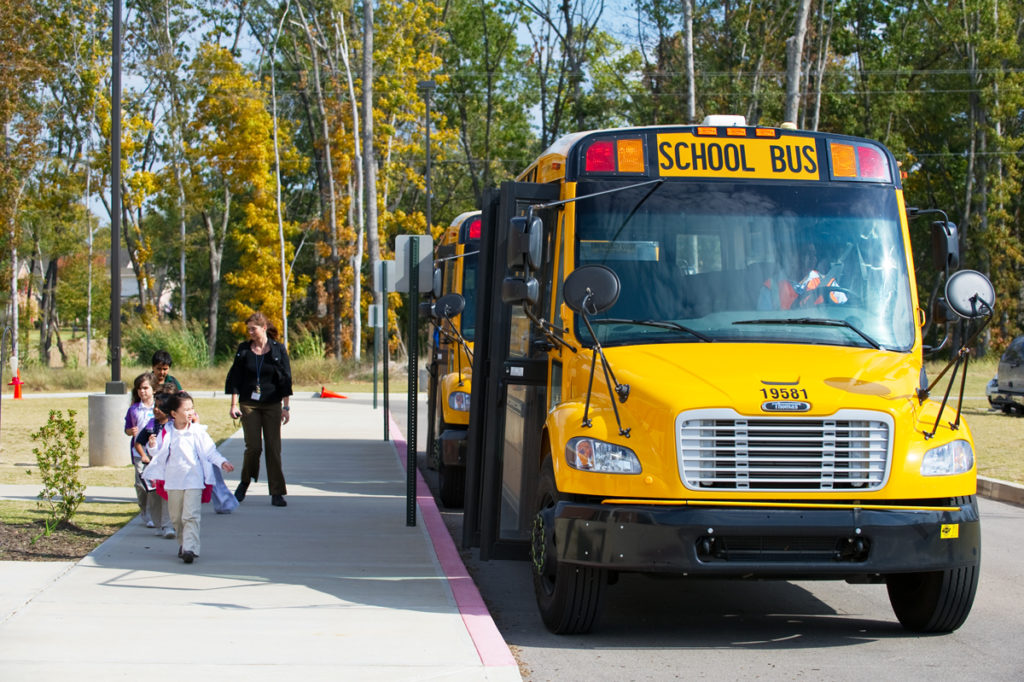

Elementary school teachers and administrators have many responsibilities, and it’s tempting for us to simply screen out what happens on the bus. I know I’ve done that. The trouble with this approach is that what happens on the bus affects both children’s ability to learn and their feelings about school. If the bus ride to school has been a painful experience, children start the day thinking about what happened on the bus rather than about the lesson that their teacher has carefully planned. If the ride home is a chaotic experience, children arrive at home feeling out of sorts. The children and the adults who care for them at home may think that the whole day went badly, when that’s not at all true. We, the adults in school, need to pull together to support our bus staff and contribute in other ways to making the bus ride a safe, kind and inclusive experience. Here are some ways to do that:
Last week I wrote about a brutal bullying incident that took place on a school bus in Greece, NY. The strategies that the bus monitor tried to stop the bullying just didn’t work. When I watched the video of her, I thought immediately about how important it is for school staff to support the drivers and monitors who ride with our students on the bus. It’s vital that school systems provide training for bus staff, and that training must cover both how to maintain a calm and peaceful bus and what to do when things go wrong. Bus staff also need back up—the assurance that when things do go wrong, staff at school will follow through.
It’s also important that we elevate and honor the adults who are in charge of keeping children safe on the bus. I’ve seen special assemblies and lunches to honor bus staff. I’ve seen educators lead students in creating cards, letters, and appreciative charts for their bus staff. These letters and cards refer to the bus staff as “Mr.” or “Ms.,” if that’s what the educators in school are called. I’ll bet the children in the “Making the Bus Monitor Cry” video don’t call their teachers by their first names—but they referred to the monitor on their bus as “Karen.” Such details matter.
We educators can teach children safe and kind bus behaviors. These can range from teaching how to sit safely to teaching how to include someone who always sits alone on the bus. I’ve seen teachers line up chairs to simulate the bus seats as children role play how to handle “tricky” situations on the bus.
Once we’ve taught these behaviors, we can remind children about safety and inclusion right before they get on the bus. A classroom closing circle can feature comments about how to be safe and kind on the bus, or we can simply give children a moment to reflect on how they will take care of each other on the bus today as they’re lining up for dismissal.
Older children’s bullying of younger children is shockingly prevalent, and because a wide range of ages are present on most school busses, the bus is a place where younger children are often bullied. Building positive relationships across age groups can be a powerful antidote. Many schools have cross-age buddy arrangements among classrooms. Even better yet, if cross-age buddies ride the same school bus, younger children have built-in protectors along for the ride.
The Peaceful School Bus Program treats each “bus route group” as a community. Each group meets with an educator in school at predictable intervals to teach, practice, and reflect on safe and inclusive ways to behave on the bus. At Grafton Elementary in Massachusetts, staff did something similar. Each bus had an adult from the school staff, the “bus teacher,” who helped children name their hopes for their school bus ride and then led them in creating rules for their bus. Even though the “bus teacher” is not present on the bus, these sorts of activities establish clear expectations for positive bus behavior, and make it possible for children and bus staff to remind each other of rules they all have a stake in.
I’d love to hear about what your schools are doing to prevent bullying on the bus. Please share by leaving a comment below!
Caltha Crowe is a Responsive Classroom consulting teacher with nearly forty years of experience teaching elementary school students and twenty years of experience mentoring new teachers. She is the author of three books: Sammy and His Behavior Problems, Solving Thorny Behavior Problems, and How to Bullyproof Your Classroom.
How to Bullyproof Your Classroom, offers a practical, proactive approach to bullying prevention. Learn how to create a positive classroom environment and how to respond to mean behavior before it escalates into bullying.
https://www.responsiveclassroom.org/product/how-to-bullyproof-your-classroom/
“Teacher-friendly from start to finish!” —Martha Hanley, Grafton, MA